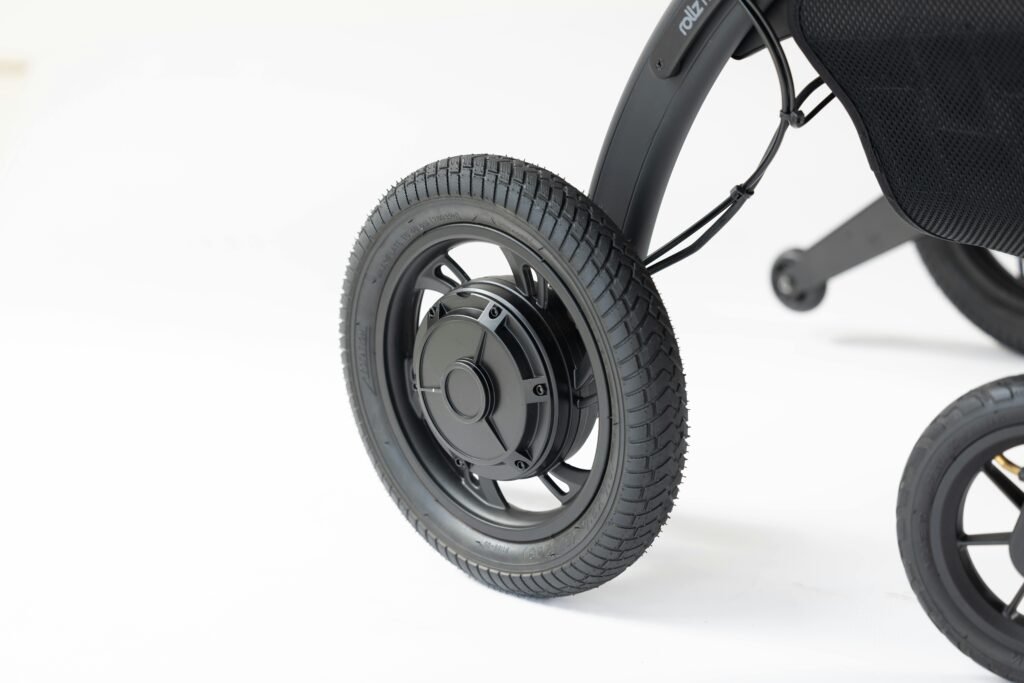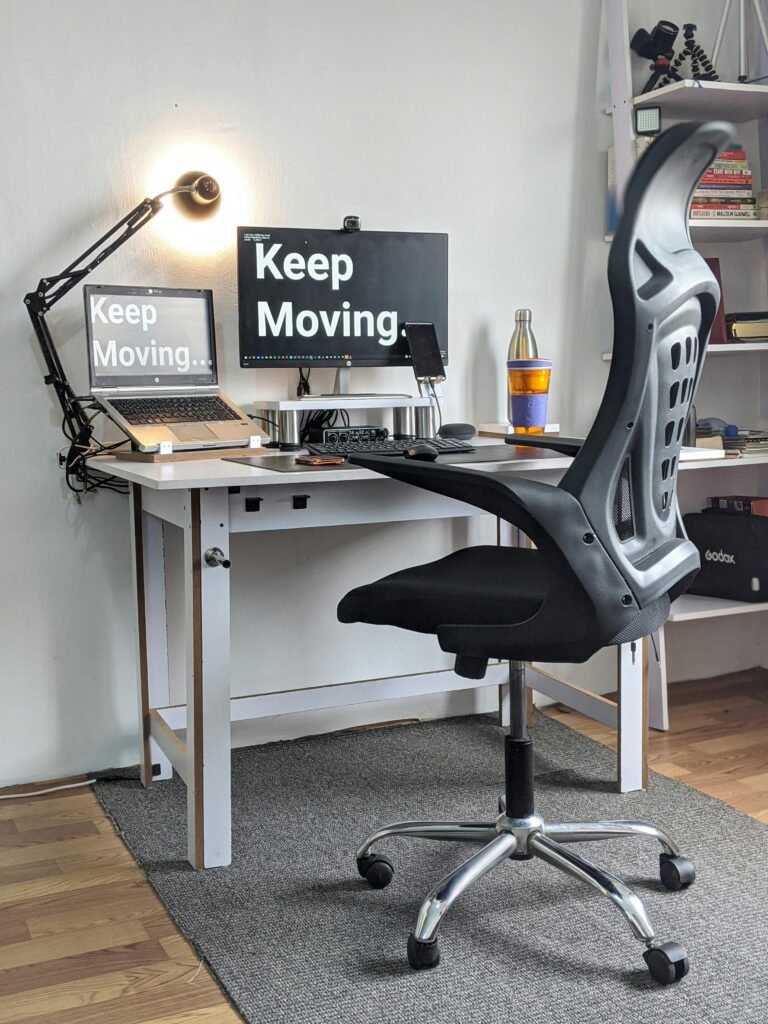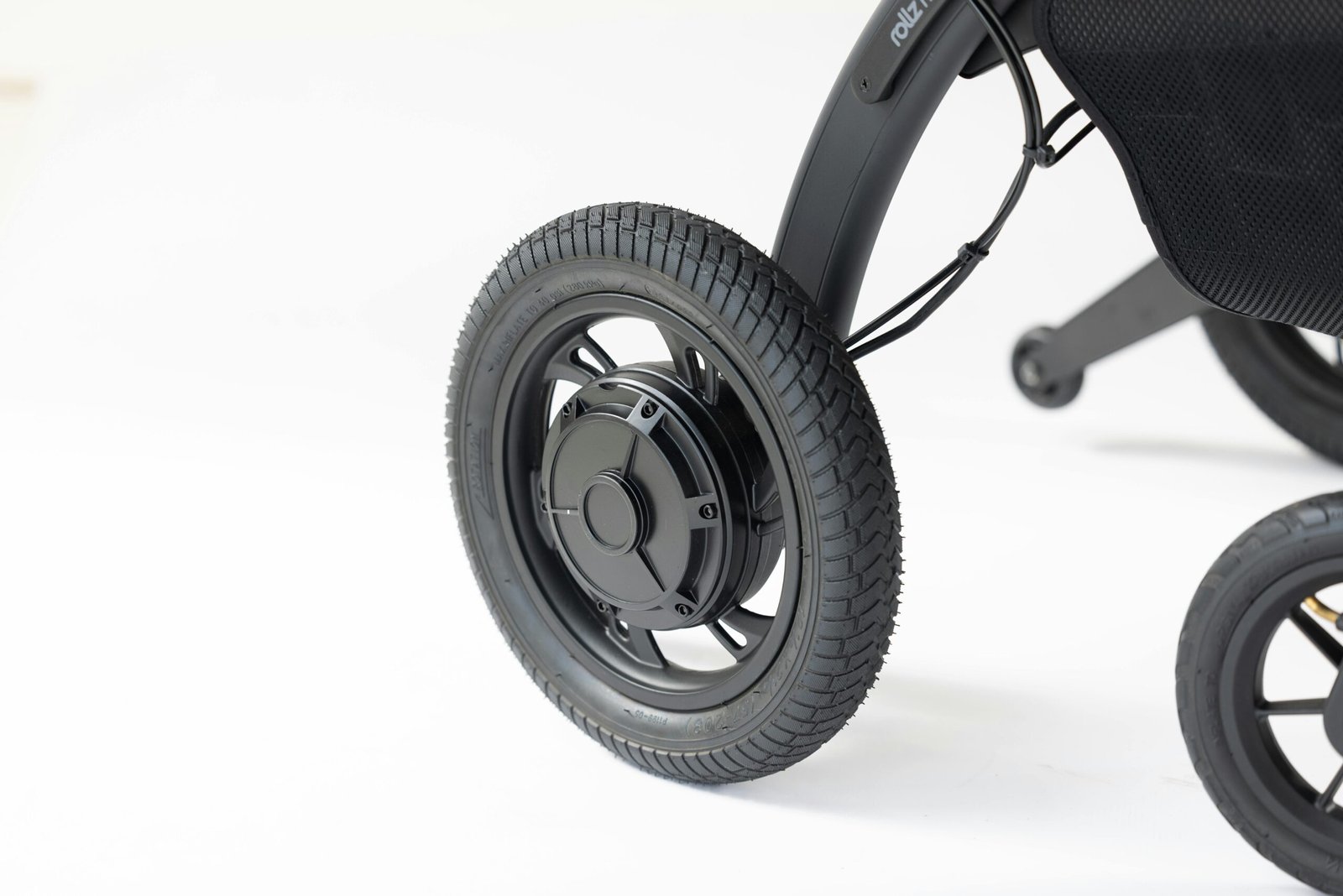Are you tired of sitting in uncomfortable chairs while studying? Look no further! In this article, we will discuss the benefits of ergonomic chairs and how they can enhance your study comfort. Whether you’re studying for long hours or just need a comfortable place to sit and focus, ergonomic chairs are designed with your comfort in mind. Say goodbye to backaches and hello to a more enjoyable study experience with these comfortable and supportive chairs.

This image is property of images.pexels.com.
Introduction to Ergonomic Chairs
What are ergonomic chairs?
Ergonomic chairs are specially designed chairs that are created to provide maximum comfort and support for individuals, particularly when sitting for long periods of time. They are specifically engineered to promote good posture, reduce strain on the back and neck, and improve overall well-being. Ergonomic chairs are commonly used in study environments where individuals spend hours sitting and focusing on their work.
Importance of ergonomic chairs for study comfort
When studying or working for extended periods, it is crucial to have a comfortable and supportive chair. Ergonomic chairs play a vital role in ensuring study comfort by providing the necessary support to maintain proper posture, reducing back and neck pain, improving blood circulation, and enhancing concentration and focus. By investing in an ergonomic chair, you can create an optimal study environment that promotes physical health, productivity, and overall well-being.
Benefits of Ergonomic Chairs
Proper posture support
One of the key benefits of ergonomic chairs is their ability to provide proper posture support. These chairs are designed with adjustable features that allow you to align your spine in a natural and healthy position. The adjustable backrest, lumbar support, and seat height ensure that you can maintain a neutral spine position, reducing the risk of developing poor posture habits or spinal issues.
Reduced back and neck pain
Back and neck pain are common issues experienced by many students and individuals who spend long hours studying or working at a desk. Ergonomic chairs are designed to alleviate and prevent such pain by providing optimal support to the spine and neck. With features like adjustable lumbar support, headrests, and armrests, ergonomic chairs distribute body weight evenly and help relieve pressure on the back and neck muscles.
Improved blood circulation
Sitting for prolonged periods can impede proper blood circulation, leading to discomfort and even health issues. Ergonomic chairs are designed with features that promote better blood circulation, such as seat depth and width adjustments. These adjustments allow for better weight distribution and reduce pressure on the thighs and lower legs, preventing numbness and promoting healthy blood flow.
Enhanced concentration and focus
An ergonomic chair’s comfort and support can greatly enhance concentration and focus while studying or working. By providing optimal support to the body, these chairs reduce discomfort and distractions, allowing you to fully engage in your tasks. With improved comfort and reduced strain, you can stay more focused and attentive for longer periods, increasing your overall productivity and performance.

This image is property of images.pexels.com.
Features to Look for in Ergonomic Chairs
Adjustability
When choosing an ergonomic chair, look for adjustability features that can accommodate your individual needs. Opt for a chair with adjustable seat height, backrest height, and recline options. These features will allow you to customize the chair’s position to ensure optimal comfort and support for your body.
Lumbar support
Lumbar support is a crucial feature in ergonomic chairs, as it targets the lower back area and helps maintain the natural curvature of the spine. Look for chairs with adjustable lumbar support that can be positioned to suit your specific needs. Proper lumbar support reduces the risk of developing lower back pain and promotes healthy posture.
Headrest
A headrest is an additional feature that provides support to your neck and head, reducing strain and allowing for comfortable head and neck alignment. If you tend to lean your head forward or experience neck discomfort, choose an ergonomic chair with an adjustable headrest that can be positioned at a suitable height and angle.
Armrests
Armrests are essential in supporting your upper body and relieving strain on your shoulders and neck. Look for chairs with adjustable armrests that can be set at an appropriate height and width. Ideally, the armrests should allow your arms to rest comfortably while keeping your shoulders relaxed and your elbows at a 90-degree angle.
Seat depth and width
The seat depth and width of an ergonomic chair should be adjustable to accommodate individuals of various sizes and body types. Your chair should provide enough space to comfortably sit with your back against the backrest while leaving a small gap between the back of your knees and the seat. Optimal seat depth and width ensure even weight distribution and prevent pressure points.
Breathable material
Choosing a chair with breathable material is important for comfort, especially during longer study sessions. Look for chairs made from materials that promote airflow, preventing excessive heat and moisture build-up. Breathable upholstery allows for better ventilation, ensuring that you remain cool and comfortable even during extended periods of sitting.
Choosing the Right Ergonomic Chair
Consider your body measurements
To ensure the ergonomic chair fits your body properly, consider your height, weight, and body proportions. Different chairs are designed to accommodate individuals of specific sizes, so choose a chair that aligns with your body measurements. Pay attention to the chair’s weight capacity as well, to ensure it can support your weight comfortably.
Test the chair’s adjustability
Before making a purchase, take the time to test the adjustability features of the chair. Sit in it for a few minutes and adjust the seat height, backrest, lumbar support, and armrests to find the most comfortable positions for you. Make sure the chair allows for easy and smooth adjustments, as this will be essential for adapting the chair to your changing needs throughout the day.
Comfortable padding and cushioning
The padding and cushioning of the chair should be comfortable and supportive. Look for chairs with high-density foam or memory foam padding that contours to your body shape and provides pressure relief. Additionally, consider the chair’s seat and backrest cushioning, ensuring that it offers sufficient support without being too rigid or too soft.
Suitable for your study environment
Consider the overall aesthetics and compatibility of the ergonomic chair with your study environment. Choose a chair that complements the style and decor of your study area. Additionally, consider the chair’s size and mobility. If you have limited space or often need to move around, opt for a chair with a compact design and easy maneuverability.

This image is property of images.pexels.com.
Types of Ergonomic Chairs
Task chairs
Task chairs are the most common type of ergonomic chairs and are designed for use at a desk or workstation. They typically feature adjustable features such as seat height, backrest tilt, and armrests. Task chairs are versatile and suitable for various study and work environments.
Kneeling chairs
Kneeling chairs are designed to distribute body weight between the buttocks and the knees, rather than solely on the seat. These chairs promote an open hip angle, improving posture and reducing lower back strain. Kneeling chairs are ideal for individuals who prefer a more active sitting posture.
Saddle chairs
Saddle chairs resemble a horse saddle, promoting a similar straddle-like sitting position. These chairs encourage a natural S-shaped spine alignment, reducing pressure on the lower back and promoting good posture. Saddle chairs are popular among those who require additional mobility while sitting, such as artists or musicians.
Ball chairs
Ball chairs, also known as exercise or stability balls, are large inflatable balls used as seating alternatives. These chairs engage core muscles and encourage active sitting, which can improve posture and balance. Ball chairs are commonly used in home study spaces or as temporary seating options.
Setting Up Your Ergonomic Chair
Adjusting the chair height
Start by adjusting the chair’s height so that your feet are flat on the floor or resting comfortably on a footrest. Your knees should be bent at a 90-degree angle, allowing your thighs to be parallel to the floor. Proper chair height ensures that you can maintain proper posture and reduces strain on your legs and lower back.
Positioning lumbar support
Adjust the lumbar support of the chair to fit the natural curve of your lower back. The lumbar support should comfortably fill the curve in your lower back, providing adequate support and preventing slouching or excessive arching. Proper lumbar support promotes good posture and reduces discomfort and fatigue.
Setting the armrest height
The armrests should be adjusted to a height that allows your arms to rest comfortably while keeping your shoulders relaxed. Adjust the armrests so that your elbows are at a 90-degree angle and your forearms are parallel to the desk surface. This position prevents strain on the shoulders and neck and promotes ergonomic arm and wrist alignment.
Aligning computer and chair height
Finally, ensure that your computer or laptop screen is positioned at eye level to avoid straining your neck and eyes. Adjust the chair height accordingly so that your eyes are level with the top third of the screen. Maintaining proper alignment between your chair, desk, and computer height is crucial for reducing neck and eye strain.
Additional Accessories for Enhanced Comfort
Ergonomic footrest
If your chair height cannot be adjusted to allow your feet to rest flat on the floor, consider using an ergonomic footrest. A footrest helps maintain proper posture and reduces strain on your legs and lower back. Look for a footrest that is adjustable in height and tilt angle to accommodate your specific needs.
Cushions and seat pads
To enhance the comfort of your ergonomic chair further, consider adding cushions or seat pads. These additions provide extra support and padding, reducing pressure points and discomfort. Look for seat pads or cushions that are specifically designed for use with ergonomic chairs and provide adequate support.
Backrest cushions
In addition to the chair’s built-in lumbar support, backrest cushions can provide extra comfort and support to your upper back and shoulders. These cushions can help alleviate muscle tension and promote proper posture. Choose cushions that can easily be attached or positioned on the chair’s backrest to provide optimal support where needed.
Ergonomic keyboard and mouse
To complete your study comfort setup, consider investing in an ergonomic keyboard and mouse. These devices are designed to reduce strain on your hands, wrists, and arms while typing or using the mouse. Ergonomic keyboards and mice provide a more natural hand and wrist position, minimizing the risk of developing repetitive strain injuries.
Maintenance and Care Tips
Regular cleaning
To keep your ergonomic chair in optimal condition, regular cleaning is necessary. Wipe down the chair with a mild detergent or upholstery cleaner to remove dirt, dust, and stains. Follow the manufacturer’s instructions regarding cleaning and avoid using harsh chemicals that can damage the chair’s material.
Checking for loose screws or parts
Periodically check your chair for any loose screws or parts. Tighten them as needed to ensure the chair remains stable and secure. Loose parts can compromise the chair’s stability and pose a safety risk. Regular maintenance and tightening of screws will prolong the lifespan of your ergonomic chair.
Replacing worn-out cushions
Over time, the cushions of your chair may become worn out and lose their supportive properties. If you notice signs of wear and tear or if the cushions no longer provide ample support, consider replacing them. Many manufacturers offer replacement cushions specifically designed for their ergonomic chairs.
Keeping the chair in good condition
To extend the lifespan of your ergonomic chair, it’s important to care for it properly. Avoid placing heavy objects on the chair that may cause damage. Be cautious when moving the chair to prevent any unnecessary strain on its components. Regularly inspect the chair for signs of wear or damage and address any issues promptly.
Affordable Ergonomic Chair Options
Budget-friendly chairs for students
If you’re on a tight budget, there are affordable ergonomic chair options available. Look for chairs that offer essential ergonomic features such as adjustable height, lumbar support, and armrests. While they may not have all the bells and whistles of higher-priced models, these budget-friendly chairs can still provide adequate comfort and support for your study needs.
Online deals and discounts
Online shopping platforms often offer deals and discounts on ergonomic chairs. Take the time to research and compare prices from various retailers to find the best value for your money. Keep an eye out for promotional periods or seasonal sales when prices may be lower.
Second-hand ergonomic chairs
Consider purchasing a second-hand ergonomic chair, which can be an excellent way to save money while still obtaining a quality chair. Many online marketplaces and thrift stores offer used ergonomic chairs at a fraction of the original cost. However, be sure to thoroughly inspect the chair for any signs of wear or damage before making a purchase.
Conclusion
Investing in an ergonomic chair for study comfort is a worthwhile decision that can significantly improve your productivity and well-being. These specially designed chairs provide optimal support, promote proper posture, and reduce discomfort and pain associated with prolonged sitting. By considering the features, types, and proper setup of ergonomic chairs, as well as utilizing additional accessories for enhanced comfort, you can create an ideal study environment that supports your physical health and maximizes your focus and concentration. Remember to maintain and care for your chair properly to ensure its longevity, and explore affordable options to find an ergonomic chair that suits your needs and budget. With an ergonomic chair, you can enhance your study comfort, boost your productivity, and ultimately improve your overall well-being.
